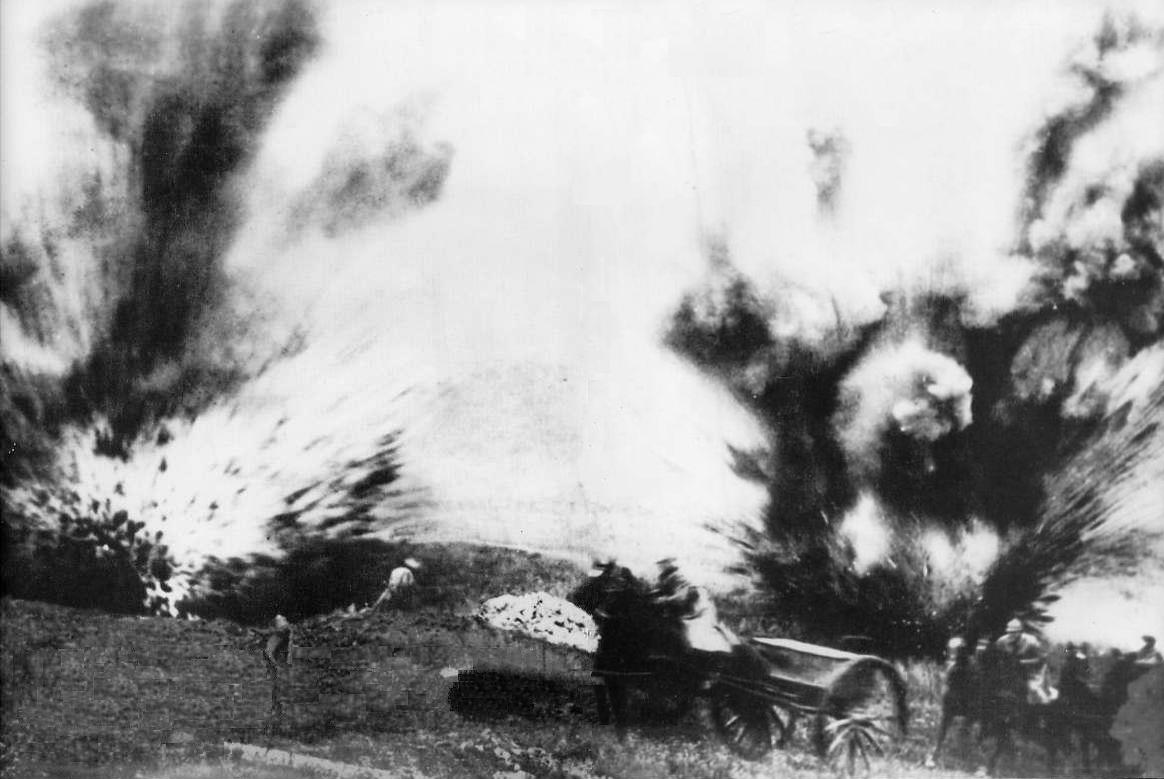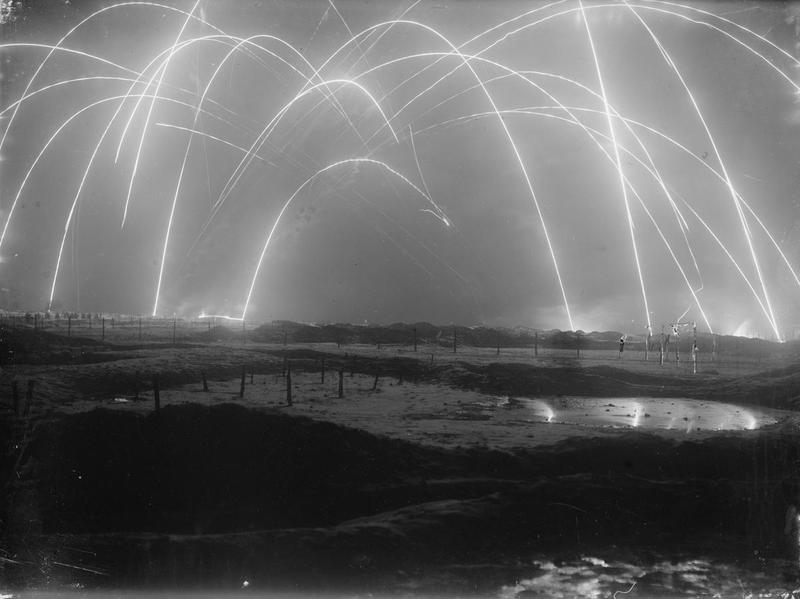Life in the Trenches: The Shelling

Artillery fire killed more men on the First World War than any other weapon. The battles of 1914 had shown how massed artillery fire could slaughter attackers caught in the open field. As trench warfare developed both sides created new types of artillery - short range mortars that could drop a shell straight down into a trench, killing dozens, howitzers that could fire shells at 45 degrees, allowing them to drop behind enemy defenses before they exploded, and massive 8, 9, 12 or even 15 inch naval guns that could penetrate deep into underground bunkers or smash concrete defenses.
By 1915 almost all troop movements were done at night to prevent the enemy from knowing about them. This was a dangerous time for the soldiers. If the enemy heard or saw troops moving in the trenches at night they would open fire with artillery. Men jammed together in trenches were helpless to protect themselves. Even in the so-called quiet moments, snipers and artillery shells regularly killed soldiers in the trenches, a phenomenon known as "wastage." Every day soldiers would see men around them killed randomly.
Over time soldiers became skilled at identifying the type of shells the enemy fired - and where they would hit. There were:
Whizbangs: These were small, 3 inch shells. They were extremely fast and fired straight at their target. Soldiers had no time to react. If they missed you you heard a whizzing sound as they passed you and then a bang when they hit something solid
Moaning Minnies: This was the British slang for German "minenwerfers", very large mortars but short range that fired up to 90 kg mortar shells in a slow arc in sky. The shells were capable of creating a 3 metre deep crater. Any soldiers able to see their flight would try to get out of the area at full speed!
Rum Jars/Plum Puddings: These were longer range but smaller mortar shells -round ball filled with nails and scrap metal attached to a stick inserted into a mortar tube. Soldiers watching their flight only had a few seconds to run or take cover!
Coal Boxes/Jack Johnsons: These were 5.9 or 8 inch very powerful high explosive shells. They were often fired at targets many kilometers behind the lines and exploded with a massive black cloud of smoke.

Bertram Howard Cox, Letter http://www.canadianletters.ca/content/document-41694?position=8&list=4I1KgSU0MkzqO4As-E0IWO2igb0rNtl2gdbYN3KN0yg
Fritz has shown us a pretty lively time. He has poured hundreds of shells all around, but so far we have had only one casualty. One of the old 59th men was killed a few days ago by a direct hit. I never believed anyone , before, when they said that one could hear a shell coming; and duck in time, but it's an absolute fact. That's something that everyone learns to do the 1st day they arrive here. To flop on the stomach at the first sound of the whistle. Of course, with a little experience one can tell by the whistle almost where it is going to drop, but the splinters that fly for about 50 yards around, are fatal, and each splinter has a whistle which you hear coming. But I tell you we've been keeping him busy ducking too, believe me. One night we got to bed at 6 AM. Firing all night.
Maurice Wilfred Bracewell, Memoir: http://www.canadianletters.ca/content/document-9871
Some of the heavy mortar-shells were called "Rum-jars". They came in varying lengths from 2 ft. to about 3 ft. 6 inches and were about 12 inches in diameter. They had a time fuse at one end and a very heavy explosive charge for moral effect. They were filled with all manner of scrap-iron. Just about everything. You could hear them coming through the air swish, swish, swish and you could see the time fuse sputtering as it went end over end with the mortar shell in flight. Any that appeared to be close overhead, you naturally figured were going to land on you! We of the Scouts would cry out a warning to the diggers when we thought any of the Mortars were going to land near them. During one night my partner and I yelled out such a warning to the diggers behind us, "This is It Boys! And he and I attempted to drop back to flop around a jog in the new trench but the Rum-jar literally exploded in our faces. It seemed as if the earth must have exploded, the concussion was terrific and felt as if it was tearing us apart. All I could see was fire, nothing but fire and we were in the middle of it.
When we came to again, the boys had dug us out and were holding us against the side of the trench. We had taken the full force of the explosion and concussion but the boys each side of us had got all the shrapnel for it killed five and wounded seven more.